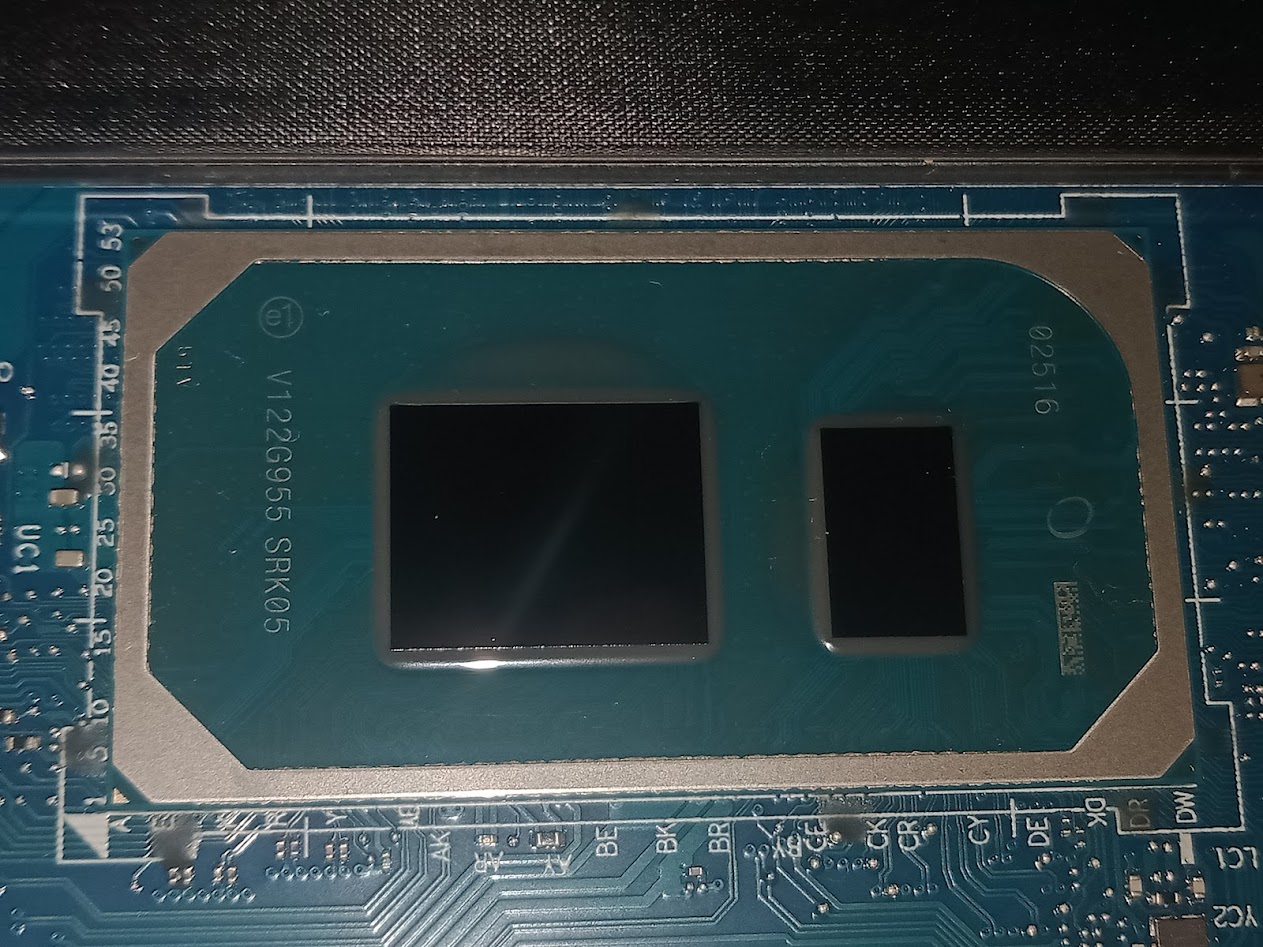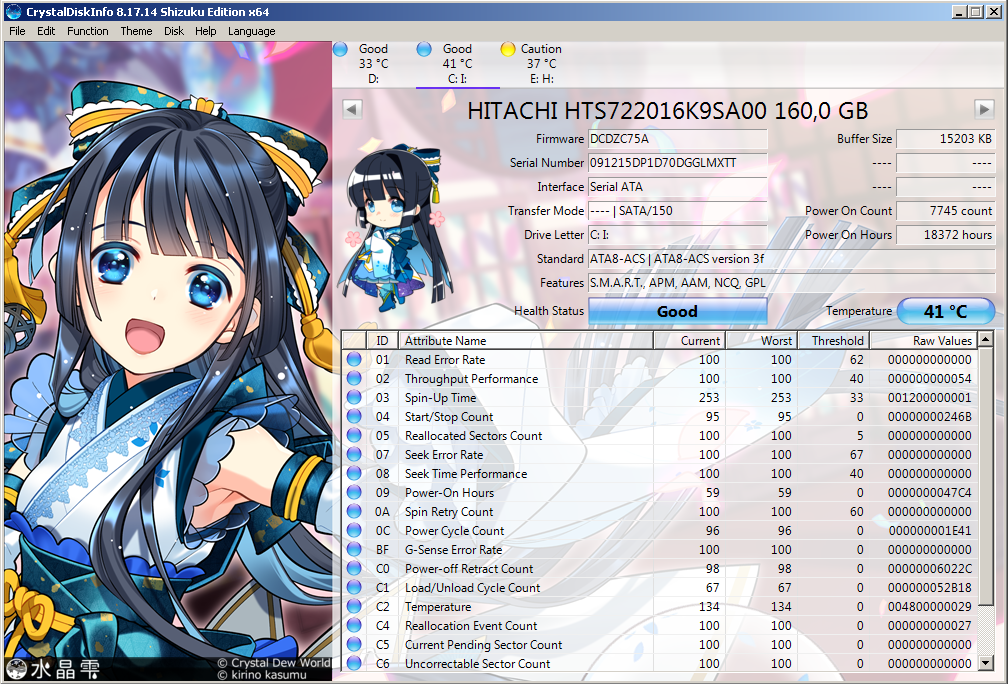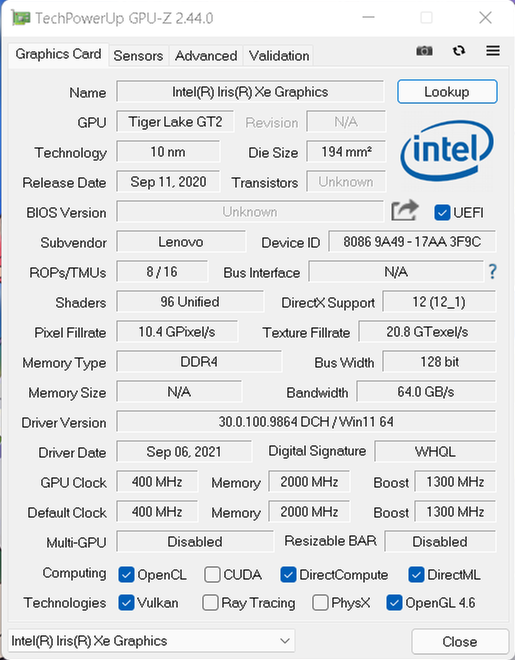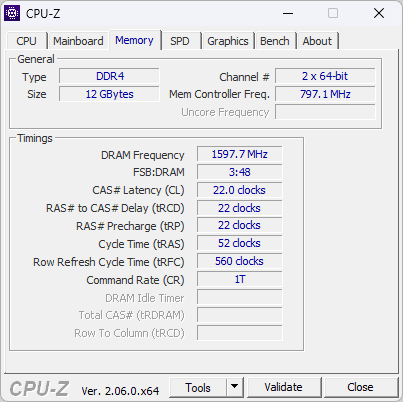Comparing: Hitachi HTS722016K9SA00 vs Intel Iris Xe Graphics (80EUs, Tiger Lake) [Disk]
In this comparison, we analyze two Disks: Hitachi HTS722016K9SA00 and Intel Iris Xe Graphics (80EUs, Tiger Lake) [Disk], using synthetic benchmark tests to evaluate their overall performance. This side-by-side comparison helps users understand which hardware delivers better value, speed, and efficiency based on standardized testing. Whether you're building a new system or upgrading an existing one, this benchmark-driven evaluation offers valuable insights to guide your decision.

Hitachi HTS722016K9SA00
| Type: | Disks |
|---|---|
| Model: | Hitachi HTS722016K9SA00 |
| Capacity: | 160GB |
| Interface: | SATA-I 1.5Gbps |

Intel Iris Xe Graphics (80EUs, Tiger Lake) [Disk]
| Type: | Disks |
|---|---|
| Model: | Intel Iris Xe Graphics (80EUs, Tiger Lake) [Disk] |
| Capacity: | 2GB |
| Interface: | DDR4 |
Specification Comparison Table
This specification comparison presents technical details of several devices or components to help you understand the key differences between each option. Use this table as a reference to determine which device best suits your needs.
| Specification | Hitachi HTS722016K9SA00 | Intel Iris Xe Graphics (80EUs, Tiger Lake) [Disk] |
|---|---|---|
| Brand | Hitachi | - |
| Format | HDD 2.5 | VRAM Disk |
| Capacity | 160GB | 2GB |
| Interface | SATA-I 1.5Gbps | DDR4 |
Submission Comparison Table
This submission comparison table displays the number and details of benchmark data submissions from various devices or components. This information helps you understand the performance based on the benchmarks that have been tested, as well as providing an overview of the consistency and popularity of the available benchmark results.
| No. | Benchmark Software | Hitachi HTS722016K9SA00 | Intel Iris Xe Graphics (80EUs, Tiger Lake) [Disk] |
|---|---|---|---|
| 1 | ATTO Disk Benchmark - 64M |
Read: 50.05 MB/s Write: 49.66 MB/s |
Read: 2430.00 MB/s Write: 2450.00 MB/s |
| 2 | CrystalDiskMark |
Read: 49.29 MB/s Write: 49.08 MB/s |
Read: 2758.52 MB/s Write: 2109.43 MB/s |
Submission Comparison Chart
This chart visualizes the benchmark scores comparison between two hardware devices based on submitted data.
Media Gallery
A collection of photos of tested hardware. These images can help you identify the physical form, model, and variant of the hardware in question. These photos are from our own documentation, and if they are not available we may not be able to document them.
About Hardware Hitachi HTS722016K9SA00
The Hitachi HTS722016K9SA00 is a thick design 2.5-inch hard disk with a capacity of 160GB, designed for laptops and other portable devices. Unlike most laptop HDDs that use a rotation speed of 5400 RPM, this model offers a speed of 7200 RPM, providing a significant improvement in read/write performance, especially in computing tasks that require fast data access.
Equipped with 16MB of buffer cache, this HDD is capable of handling heavier workloads, such as multitasking, application installation, or activities with high I/O intensity. This speed gives it an edge over regular HDDs in terms of response time and efficiency when running an operating system or opening large files. Although its capacity is relatively small when compared to today's storage standards, the HTS722016K9SA00 is still very suitable for use as additional storage or to revive older systems that still rely on 2.5” SATA storage.
The test was conducted using an HP 1000 1b05AU laptop with the following configuration: AMD E1-1200 CPU, 4GB DDR3 RAM (2x2GB in single-channel mode due to CPU limitations), and Windows 7 64-bit operating system. The HDD was installed via an HDD Caddy in place of an optical drive, demonstrating the flexibility of using it as a second storage in a system with an additional SATA slot.
During testing, the drive's performance showed fast response when booting the operating system, opening heavy applications, and performing large file transfers. Despite its limited capacity, the 7200 RPM speed and larger cache compared to 5400 RPM HDDs make it an ideal choice for users who prioritize access speed over large capacity.
The Hitachi HTS722016K9SA00 is still an attractive option for users who want fast yet affordable storage, especially in legacy system configurations or as a secondary drive for modern systems with specific needs.
Tested on:
Device: HP 1000 1b05au (using HDD Enclosure)
Specs:
CPU: AMD E1-1200
OS: Windows 7
RAM: 2x2GB (Does not support dual channel due to limitations of the CPU, currently running single channel mode)
* For CrystalDiskMark the hard drive is directly run on the main sata port, and the hard drive is used as the operating system.
Wednesday, 13 February 2019 12:45:58 | Update: 1 month ago
About Hardware Intel Iris Xe Graphics (80EUs, Tiger Lake) [Disk]
Intel Iris Xe Graphics (80EUs, Tiger Lake) is the integrated graphics solution (iGPU) of the 11th generation of Intel Core processors, specifically the Tiger Lake series. With 80 Execution Units (EUs) and support for Intel's latest graphics architecture, Iris Xe is capable of delivering significantly better performance than previous generations, including in terms of lightweight graphics rendering, 4K video playback, and casual gaming. Another advantage is its excellent power efficiency as it is directly integrated in the CPU, making it ideal for thin and power-saving laptops.
In this test, Iris Xe Graphics was configured to utilize part of its shared memory as a VRAMDisk. The VRAMDisk concept allows the use of a portion of VRAM-which in iGPUs like Iris Xe comes from the main system RAM-as high-speed storage. While not as fast as physical RAM-based RAMDisks, VRAMDisks on iGPUs still offer very high read/write speeds, mainly due to the optimization of the graphics architecture and the wide memory bandwidth.
The test was conducted on a Lenovo IdeaPad Slim 3i 14ITL6, with an Intel Core i5-1135G7 processor, 12GB DDR4 3200MHz dual channel RAM, and Windows 11 22H2 operating system. Based on data from dxdiag, the dynamically available VRAM reaches 6GB, and in this test, 2GB was allocated as VRAMDisk using GPU RAM Drive software.
Benchmark results from CrystalDiskMark show read speeds of 2758.52 MB/s and write speeds of 2109.43 MB/s. These speeds are significantly higher than SATA SSDs and even close to mid-range NVMe SSDs, making VRAMDisks on iGPUs an attractive experimental solution for temporary data caching, storage performance testing or other specialized scenarios. With a 128-bit bus width and support for 3200MHz DDR4 memory, Iris Xe VRAMDisk shows that even integrated graphics can be creatively utilized for high-speed storage tasks.
Device test (testbed):
Device: Lenovo IdeaPad Slim 3i 14ITL6
CPU: i5 1135G7
RAM: 12GB DDR4 3200MHz Dual Channel (8+4)
OS: Windows 11 22H2
Friday, 06 August 2021 04:34:19 | Update: 1 month ago



